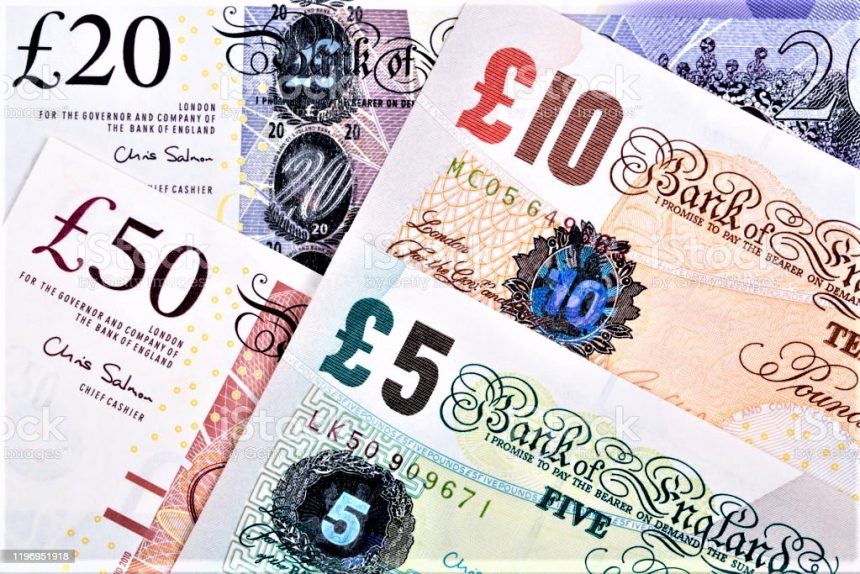Pound Finds Support Near 1.3550 Amid Broader Greenback Weakness.
The British Pound (GBP) traded with a bullish tone on Thursday, holding strong around the 1.3550 level against the US Dollar (USD), as the latter continues to reel from a spate of downbeat macroeconomic data out of the United States. Adding to the pressure on the Greenback renewed tariff uncertainty after US President Donald Trump doubled import duties on key metals, including steel and aluminum, to 50%. These factors, coupled with cautious monetary guidance from Bank of England (BoE) Governor Andrew Bailey, have created a supportive backdrop for the GBPUSD pair.
Despite a relatively uneventful UK economic calendar this week, market participants remain focused on how the BoE navigates sticky inflation and global headwinds. Governor Bailey, in a testimony to Parliament’s Treasury Committee, reiterated the need for a “gradual and careful” approach to monetary easing, emphasizing growing global uncertainties and domestic inflation resilience.
BoE’s Cautious Messaging Buoys Pound
In testimony earlier this week, BoE Governor Andrew Bailey confirmed that while the path for interest rates tilted downward, the magnitude and pace of any cuts remain highly uncertain. His comments reflected a central bank that is hesitant to commit to an aggressive easing cycle while price pressures remain elevated and the labor market relatively tight.
“I think the path remains downwards, but how far and how quickly is now shrouded in a lot more uncertainty,” Bailey told lawmakers.
The BoE expected to refrain from cutting rates at its next policy meeting due to persistent service-sector inflation and decent wage growth, which support demand-driven price pressures. Traders have largely priced out an immediate rate cut in June, with expectations now skewed toward an August or September move, depending on incoming inflation and wage data.
This careful stance by the BoE contrasts sharply with growing market conviction that the US Federal Reserve may need to ease policy aggressively in the second half of 2025, especially after Wednesday’s dismal labor and services data.
Trump’s Trade Tariffs Rattle Markets, Undermine USD Confidence
While the BoE strikes a cautious tone, market volatility being driven largely by the United States’ economic and policy developments. A key source of uncertainty this week has been President Trump’s renewed protectionist stance. On Wednesday, Trump shocked markets by announcing a 50% tariff on steel and aluminum imports, signaling a return to his aggressive “America First” trade posture.
The move not only risks exacerbating input cost inflation in US manufacturing but also rekindles fears of a prolonged trade war with China and other major trading partners. These concerns were amplified when Trump posted on Truth Social:
“I like President Xi of China, always have, and always will, but he is VERY TOUGH, AND EXTREMELY HARD TO MAKE A DEAL WITH!!!”
Despite the harsh tone, some analysts interpret this as a sign that direct talks with Beijing may be underway. Even so, businesses and investors remain cautious, especially given the historical impact of tit-for-tat tariffs on global growth and investment confidence.
Weak US Economic Data Reinforces Fed Rate Cut Bets
The US Dollar has also been under pressure following a string of weaker-than-expected economic reports, further cementing the case for Federal Reserve interest rate cuts. Most notably:
- The ADP private payrolls report for May showed only 37K jobs added, a massive miss compared to expectations of 115K and the lowest monthly tally since early 2021.
- April’s figure was also revised down to 60K, from the previously reported 70K.
- Meanwhile, the ISM Services PMI signaled a contraction in May, falling below the 50.0 threshold for the first time since June 2024.
With the service sector making up two-thirds of the US economy, the data points to a loss of economic momentum that could trigger a more dovish Fed posture. Further deterioration in Friday’s Nonfarm Payrolls (NFP) could lead traders to fully price in a September rate cut, with additional easing likely into 2026.
Trump added fuel to the fire by renewing his attacks on Fed Chair Jerome Powell, blaming him for not cutting rates quickly enough:
“ADP NUMBER OUT!!! ‘Too Late’ Powell must now LOWER THE RATE. He is unbelievable!!! Europe has lowered NINE TIMES.”
Such public pressure on the Fed could compromise its perceived independence and add political risk to the Greenback’s outlook.
Pound Strongest Against the Yen; Mixed vs. Antipodeans
In broader FX markets, the British Pound was among the stronger performers on Thursday, particularly versus the Japanese Yen, which continued to weaken despite expectations of further rate hikes by the Bank of Japan. According to the latest currency heat map:
- GBPJPY rose 0.41%, the strongest move among major GBP pairs.
- GBPUSD climbed 0.08%, holding firm near a six-week high.
- GBP gained ground against the EUR (+0.05%) and CHF (+0.26%) but was mixed against high-beta currencies like the AUD (-0.19%) and NZD (-0.22%).
The divergence in performance reflects GBP’s position as a stable mid-yield currency, benefiting from relative policy caution at the BoE while avoiding the more dramatic trade and political risks weighing on the US Dollar and Japanese Yen.
Outlook: NFP, Fed Guidance, and Trade Tensions in Focus
Looking ahead, the US Nonfarm Payrolls (NFP) report on Friday expected to be the most significant macro catalyst for the GBPUSD pair. A weak print could trigger a sharp drop in US yields, accelerating capital flows away from the Dollar and toward other developed market currencies like the Pound.
In addition to NFP, speeches from key FOMC members and further developments in US-China trade negotiations will be closely monitor. Markets remain skeptical about a resolution to the ongoing tariff standoff, especially as Trump’s messaging remains erratic and combative.
For the UK, while the domestic economic calendar is light this week, focus will return to inflation data and labor market indicators in the coming weeks, which will help determine whether the BoE follows through with its cautious easing outlook.
Conclusion: GBPUSD Poised for More Gains If US Data Disappoints Further
The GBP/USD pair looks well-supported near 1.3550 as a combination of BoE prudence, US Dollar vulnerability, and global trade instability weigh in the Pound’s favor. Unless US macroeconomic data rebounds significantly or BoE rhetoric shifts dovish, the path of least resistance for GBPUSD may remain to the upside in the near term.
However, geopolitical and trade risks remain two-sided, and any unexpected escalation between the US and China, or a sudden dovish pivot by the BoE, could quickly reverse fortunes. As such, market participants should remain nimble and closely watch headline risks.
[faq-schema id=”39772″]









